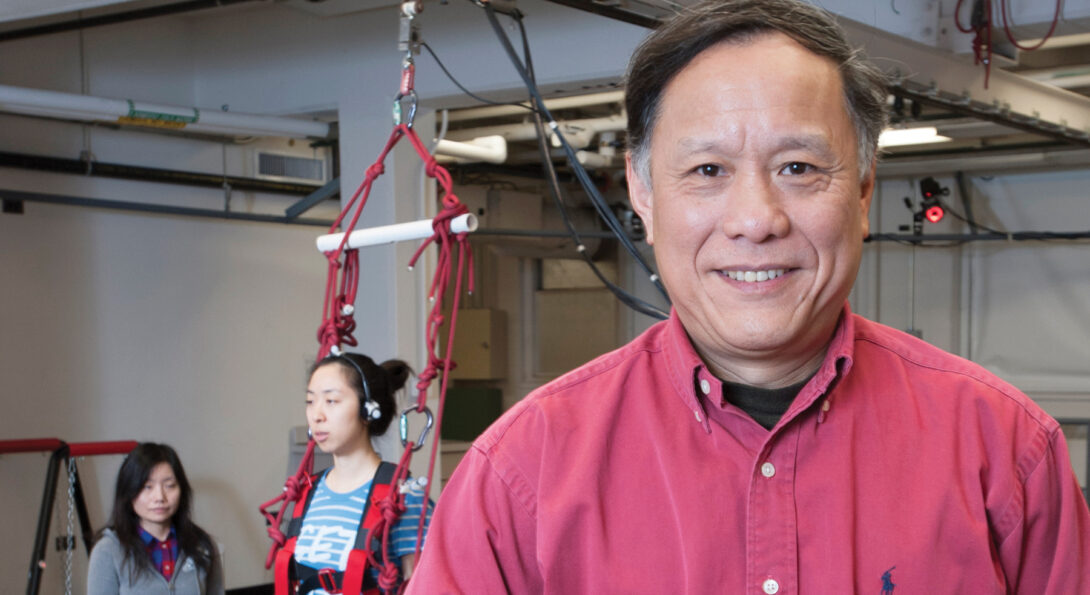Teaching older adults to prevent falling

Clive Pai makes older adults trip and fall, but it’s for their own good.
Strapped safely into a harness, they stride along a special walkway in Pai’s Clinical Gait and Movement Analysis Lab. Suddenly, the surface slides from underneath their feet. It’s a process that can help people learn how to fall, says Pai, professor of physical therapy in the UIC College of Applied Health Sciences.
“We mimic a real-life situation,” he says. “In the very first trial, they will fall—and fall badly. But in one, two, three times, they can master the skill and quickly adapt. The amount of memory they have about this learned behavior is astonishing.”
With support from the National Institute on Aging, Pai is developing a computerized treadmill program that could be used in physical therapy offices to help prevent injuries among older adults.
If people learn to fall in a safe environment, Pai says, they will train themselves to improve their protective stepping—movements that help people recover from instability.
“If this approach cannot completely eliminate all falls, it will at the very least make the falls less damaging to the body,” he says. “Falls can be devastating. There’s something we can do to improve a person’s quality of life by reducing the likelihood of a fall and ensuing fractures.”
Pai, a 2015 UIC Distinguished Researcher of the Year, has received two decades of uninterrupted support from the National Institutes of Health.